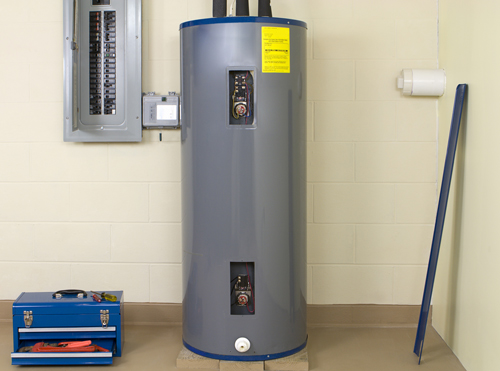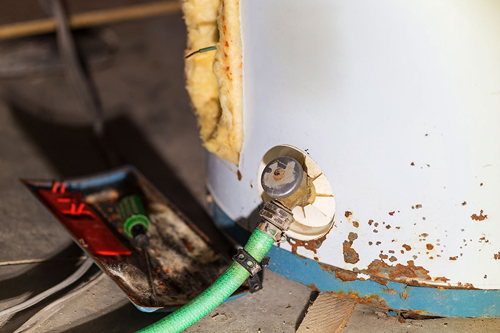Whether you’re preparing to sell your home or looking to learn more about the home you’re living in, being able to determine the age of your water heater is an essential skill. Most hot water heaters have a lifespan between 10-15 years, and after that period passes they are less efficient and sometimes even damaged. How can you quickly determine the age of your water heater?
Know Where to Look
The quickest way to determine age is easiest on newer models. Most of these models have an information sticker that shows the installation date so that you know exactly when it was placed in the home. With older models, things are more complicated. First, you will need to find and decipher the serial number. This number is typically located on the side of the water heater near any warning labels. The serial number will contain the month and year of construction, but every manufacturer uses a different format to record this information. Before you can learn the date, you must know the manufacturer.

What Is the Age of Your Water Heater?
- O. Smith: This manufacturer uses a simple system. For any models created before 1997, the year and week are in the first four numbers of the serial number. It will read YYWWxxxxxx. For models made between 1997-2008, there will be a number followed by a letter between A and M (but excluding I to eliminate the confusion between 1 and I). A is January and M is December, and the two numbers after the letter are the year. Current models return to the pre-1997 format.
- Rheem: The age of your water heater is fairly easy to find if you have a Rheem water heater. Models made after 2000 have the month and year of manufacturing in the serial number. The four digit code is the third through sixth digits in the serial number, so it will read xxMMYYxx.
- Navien: This manufacturer uses a very different approach. You will see four different numbers that are followed by a letter. Next, you’ll see a number that shows the year it was made and another letter. This manufacturer does not include the month or week that units were built, so you will only get information about the year it was made.
- Bradford White: Bradford White uses a simple two-letter code to give the date of manufacture. The first letter is the year and the second letter is the month.
- American Water Heater: This brand is associated with A.O. Smith, so they use the same code that A.O. Smith does, including the differences between models made between 1997-2008 and after 2008.
- State Industries: This manufacturer has a confusing formula to determine the age of your water heater. One uses only numbers and another uses a combination of letters and numbers. In the first format, the first two numbers are the year and the second set of numbers are the week. Much like other companies, they use the A-M system to signify the month and then use two digits after it to represent the year.
- Rinnai: Rinnai’s water heaters use two different serial number patterns. Newer models use letters to represent the month and year, but in older water heaters that were manufactured before 2010 they used exclusively numbers.
When Should You Replace Your Water Heater?
Once you determine the age of your water heater, you should take steps to think about whether or not it’s time to replace it. Water heaters are designed to be durable and last a long time with proper maintenance, but there are subtle signs that can indicate it’s time to replace sooner rather than later. Some of the signs that you need to replace your water heater include:
- Age of the Unit: Once the water heater is past the 10-15 year mark, it will be less energy efficient and need to be replaced.
- Less Hot Water: If there is less hot water available than there used to be when you are taking a shower, it might be a sign that your hot water heater is accumulating sediment or unable to provide enough heat for an average shower.
- Elevated Electricity or Heating Bills: Almost 20% of your annual household energy bills cover the costs of heating your shower and other hot water. Older water heaters are less efficient, so your bills might increase over time.
- Corrosion: Visible corrosion on your water heater is a worrying sign, and it means that it should be replaced as soon as possible.

How Can I Have My Water Heater Inspected?
Call Alban Inspections today at 800-822-7200 to schedule an appointment for a water heater inspection in Bethesda, MD. We have flexible scheduling and always show up on time to your appointment. We serve homeowners throughout Washington, D.C., Virginia, Maryland and Pennsylvania and can also complete radon testing, mold testing, water and septic system testing, lead-based paint inspections, commercial inspections and consultations. We are ready to help you feel confident purchasing your new home or property.





